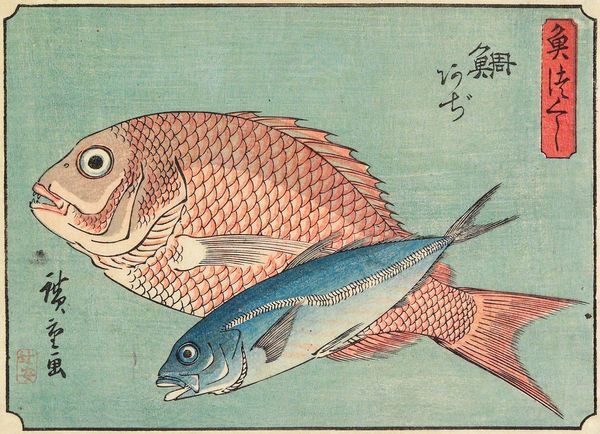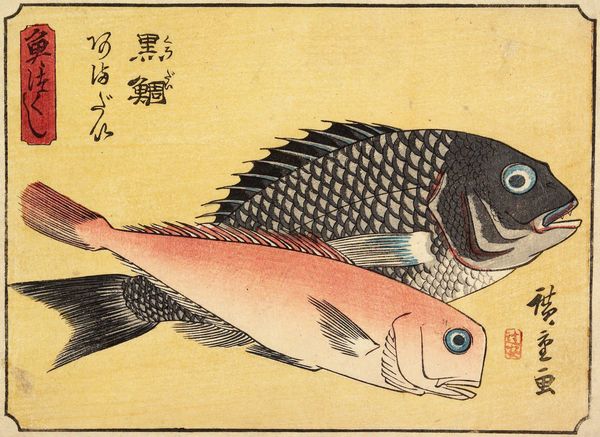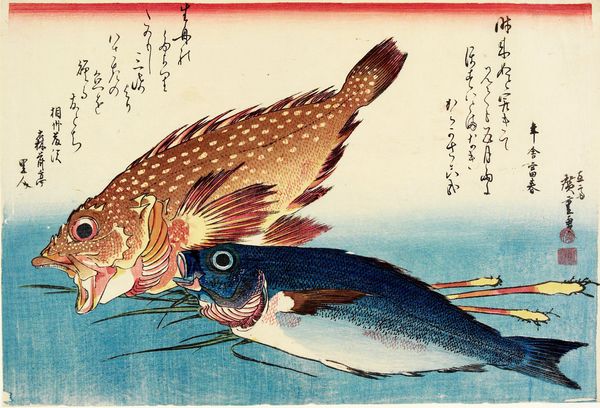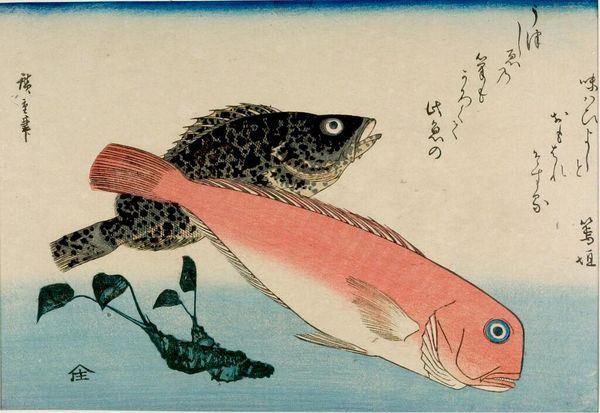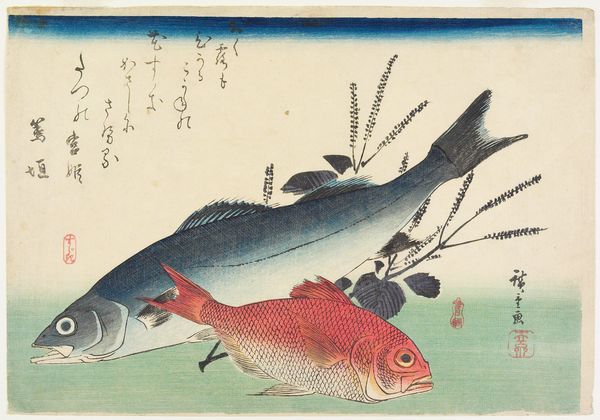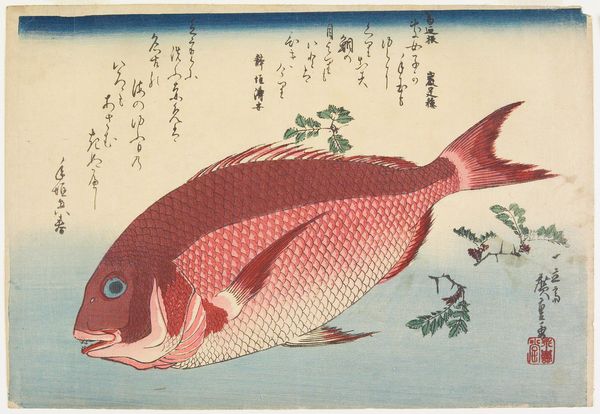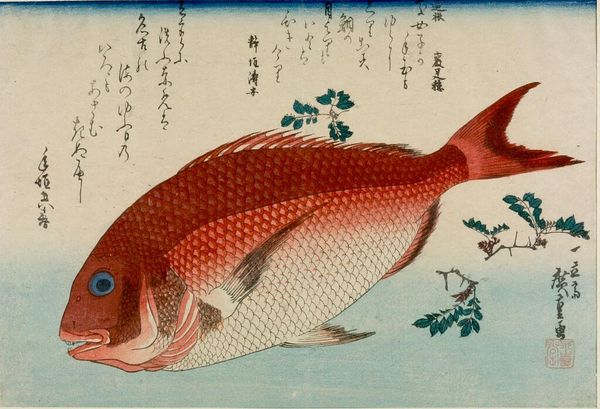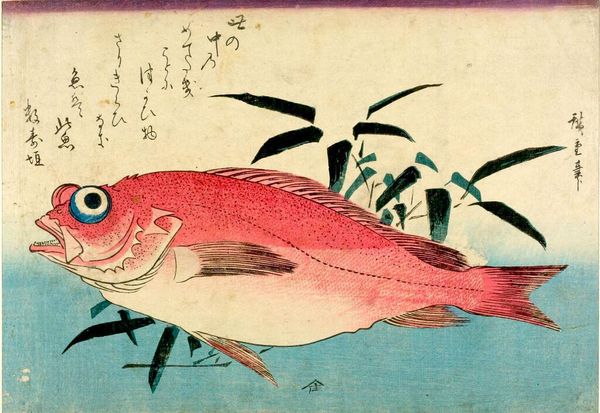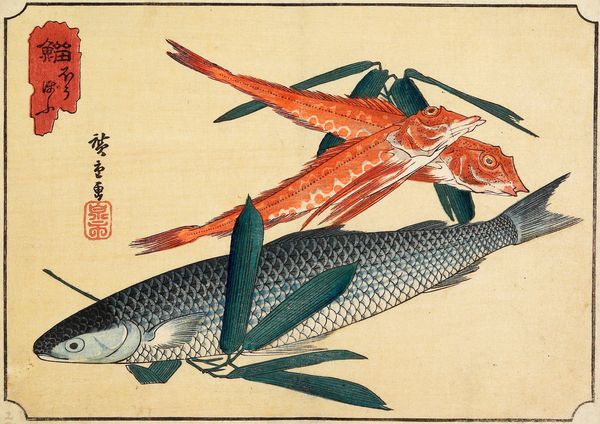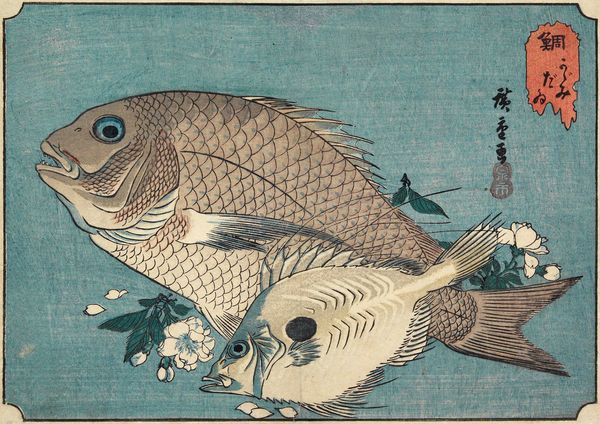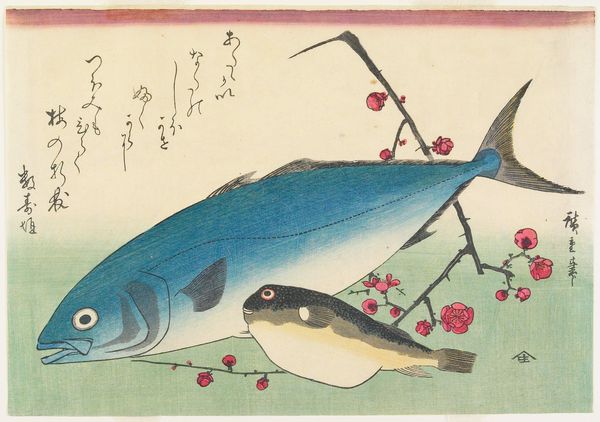
print, ink, woodblock-print
# print
#
asian-art
#
ukiyo-e
#
ink
#
woodblock-print
#
orientalism
Dimensions: 5 7/8 × 8 1/4 in. (14.9 × 20.9 cm) (image, horizontal chūban)
Copyright: Public Domain
Curator: Looking at this vibrant print titled "Red Snapper and Halfbeak," created by Utagawa Hiroshige sometime between 1835 and 1839, what's your initial response? Editor: Well, immediately the almost unnatural, saturated colors grab my attention. The red is so striking against the blue background. And those eyes! It has a slightly unsettling yet captivating quality. It feels deliberately artificial, rather than striving for realistic depiction. Curator: That's insightful. Hiroshige was a master of Ukiyo-e prints, a genre deeply ingrained in the popular culture of Edo-period Japan. This work highlights the increasing consumerism and sophisticated urban life of the time. The depiction of fish like this reflects a growing interest in the natural world, viewed through the lens of the market. Editor: I see that connection, certainly. The print’s woodblock technique is also telling. It is not about capturing a single, fleeting moment, like painting from life might aim for, but about reproduction and distribution. Were these affordable to average people? Did they decorate homes, wrapping paper for goods? Curator: Indeed, they were relatively accessible. These prints weren't considered 'high art' in the same way paintings might have been. They were often used for advertising, illustrations, and popular entertainment, contributing to a shared visual culture across different social classes. Editor: That accessibility shapes my perception of its value. It challenges traditional artistic hierarchies, focusing on everyday subject matter that democratizes art, making it more accessible. That brilliant red—surely there were material implications for securing a dye so strong. Trade? Scarcity? How did this impact costs and artistic choice? Curator: Exactly! Considering the materials reveals connections between artistic production, trade routes, and the everyday lives of people consuming these images. The availability of certain pigments, the organization of workshops, and the market for prints were all interconnected. These prints gave people ways of seeing themselves and the world around them. They participated in crafting narratives of daily life and, in turn, reinforced cultural values of the era. Editor: It’s amazing how a simple image of fish can reveal such layers of history, culture, and even economics. Curator: A rich lens to view society indeed. The interplay between art and society gives new meaning to this work.
Comments
No comments
Be the first to comment and join the conversation on the ultimate creative platform.

